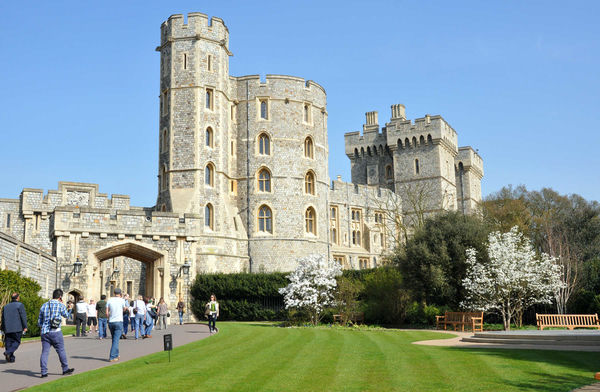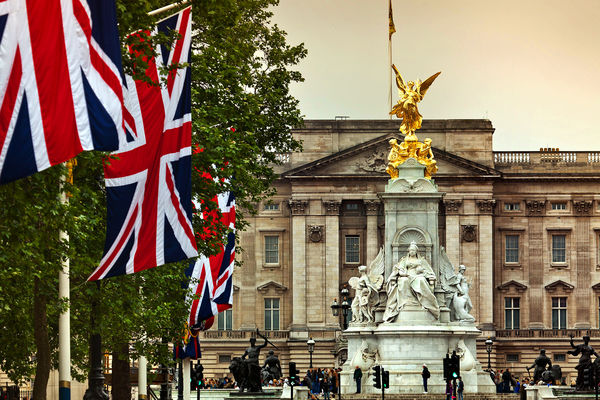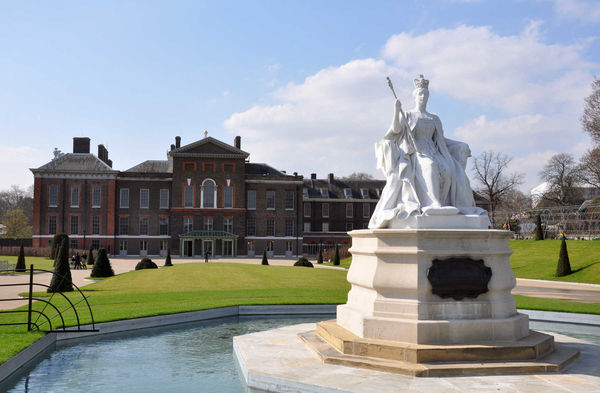Palace Intrigue: Britain’s Best Royal Residences to Visit
By Rick Steves


Chances are you aren't visiting Britain on invitation from royalty — neither am I — but that doesn't mean you can't visit some of their residences in Great Britain. In addition to Windsor Castle, where the late Queen Elizabeth II cooled her crown, London's Kensington and Buckingham palaces, and Scotland's Balmoral Castle and Palace of Holyroodhouse — are great places to put yourself in royal shoes for a day.
Almost a thousand years ago, William the Conqueror — needing a home base for his occupying Norman forces — built the first fortification of Windsor Castle on a chalk hill above the Thames. With Windsor's easy access to London via river and a handy hunting forest nearby, it made sense that future kings rebuilt and expanded the castle and its gardens, then later enhanced the site as a sumptuous palace.
The castle's spectacular St. George's Hall is the site of state banquets, when a single table is set stretching the length of the hall, seating 160 guests. A visit to the ornate state rooms includes a chance to enjoy an up-close peek at the 1924 dollhouse of Queen Mary (Elizabeth's grandmother). The castle grounds are also home to St. George's Chapel, where Harry and Meghan said their vows. Dating from about 1500, and one of the finest examples of Gothic architecture in England, it holds the tombs of 10 sovereigns, including Henry VIII.
It's a bit harder to get a peek inside the big enchilada of London: Buckingham Palace. The palace's 19 lavish state rooms, its throne room, grand staircase, and parts of its gardens are open to the public — but only for a few weeks in late summer (and via expensive private tours at other times of year). That may change in coming years — Charles has made it clear how uninterested he is in actually living in his official residence (especially while it's undergoing a major refurbishment), and that he'd like make the palace more welcoming to his subjects.
Fortunately, Kensington Palace, sitting primly on its pleasant parkside grounds in central London, is open year-round. A visit here gives a fun glimpse into the lives of several important residents, such as William and Mary, George III, and Victoria. It was Victoria, born here in 1819, who moved the monarchy to Buckingham Palace. Since then, lesser royals have bedded down at Kensington: Princess Diana lived here both during and after her marriage to then-Prince Charles, and it's now the official London home base of William and Kate. (Most of the time they live at Adelaide Cottage, tucked away in the private grounds of Windsor Castle.) While the royals' private quarters are strictly off-limits, large parts some of the immaculately restored palace are open to the public.
This 50,000-acre private estate of Balmoral, located within Cairngorms National Park in northeast Scotland, has been the royals' main rural outpost since 1848, when Queen Victoria fell in love with this remote part of Britain. At the time the rest of Europe was ensnared in anti-royalist, pro-democracy revolutions, but Victoria embraced Highland culture, spending a total of eight years at Balmoral — and the Scots loved her for it. Ever since, each British monarch has enjoyed retreating to this sprawling property, designed for hunting and fishing. Balmoral was a favorite of Queen Elizabeth II in particular, and it's where she passed away in September 2022. (Charles and Camilla, however, usually stay at the nearby estate of Birkhall, which is closed to visitors.)
Balmoral Castle was built in the Scottish Baronial style — a romantic, faux-antique look resembling turreted Scottish Renaissance castles from the 16th century. The estate still has a huge staff, 80 miles of roads, a herd of Highland cattle, and a flock of Highland ponies (useful for hauling deer carcasses over the hills). Between April and mid-August you can visit Balmoral yourself, but be aware that it's a mainly outdoor visit of the grounds, gardens, and palace exterior; only one modest room (the ballroom) is open to the public.
For many, a better — or at least easier — Scottish palace visit is Holyroodhouse, right in the middle of Edinburgh. Since the 16th century, it's marked the downhill end of Edinburgh's Royal Mile, which stretches up to Edinburgh Castle. Built on the site of a 12th-century abbey, Holyrood was the true home, birthplace, and coronation spot of Scotland's Stuart kings in their heyday (James IV; Mary, Queen of Scots; and Charles I), who preferred living at Holyrood to the drafty hilltop castle. It's particularly memorable as the site of some dramatic moments from the short reign of Mary, Queen of Scots — including the murder of her personal secretary by agents of her jealous husband.
These days it serves a role akin to Buckingham Palace: a place to handle official affairs while in the capital. And every July, the royal family hosts a magnificent tea party in the palace gardens, serving some 8,000 guests. (They get help pouring.)
Unlike most of Balmoral Castle, much of Holyrood Palace is open to the public outside of royal visits. The building, rich in history and decor, is filled with elegantly furnished Victorian rooms and a few darker, older rooms with glass cases of historic bits and Scottish pieces that locals find fascinating. A multimedia guide leads you through the fine apartments and tells some of the notable stories that played out here.
Every time there's a landmark royal occasion, the British recharge their inclination to embrace their royalty. For royal watchers, visiting these residences is a chance to be a small part of pomp.

